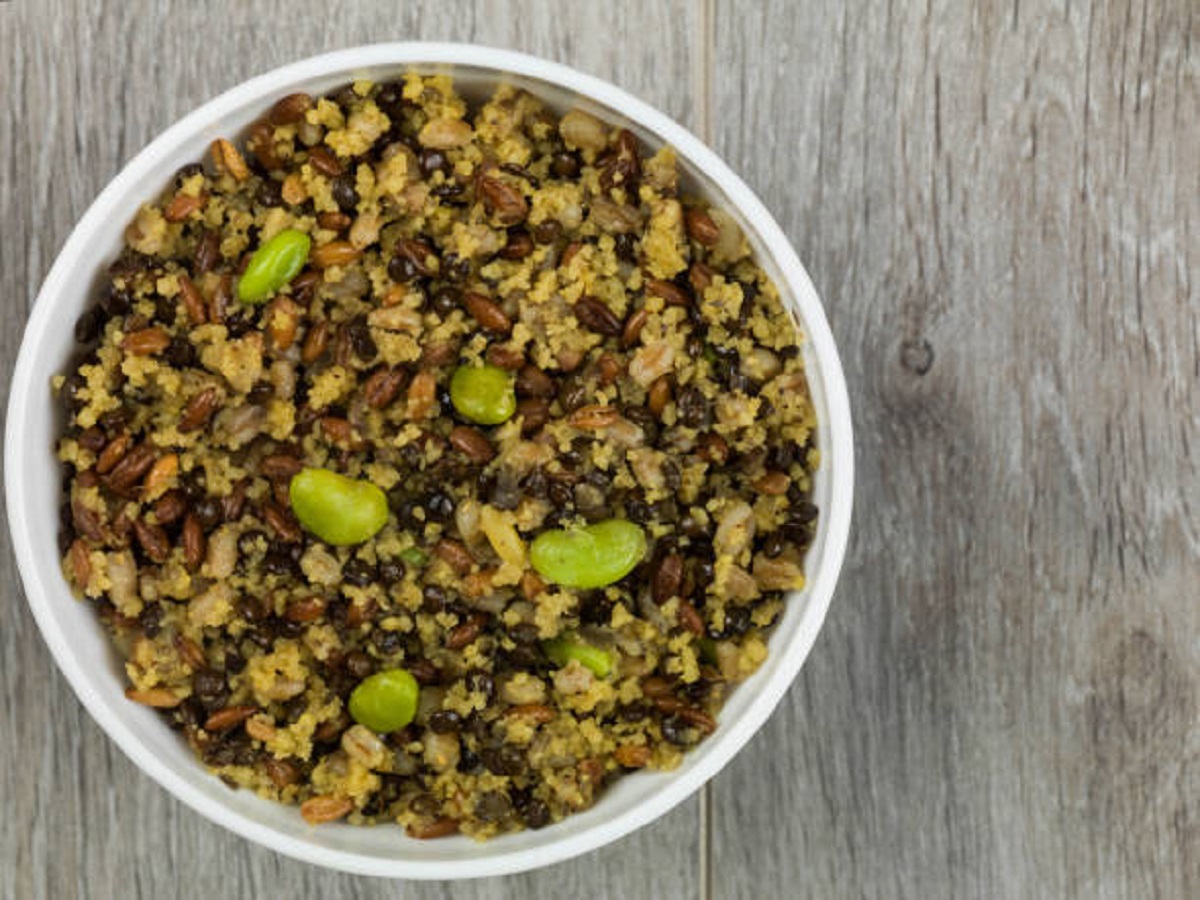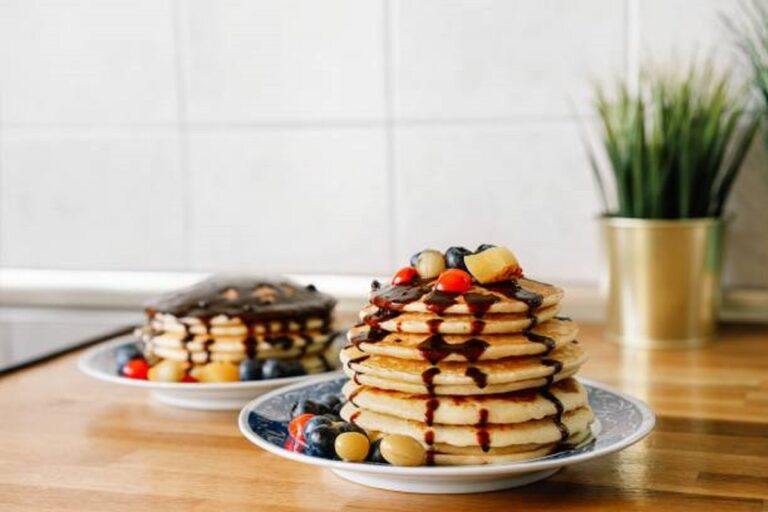TRUE FOOD KITCHEN’S $18 BOWL MADE AT HOME FOR $4
I don’t know about you, but every time I walk into a health restaurant like True Food Kitchen, I feel a mix of excitement and dread. Excitement because I love their colorful, nutrient-packed bowls that scream healthy vibes. Dread because my wallet starts crying before I even sit down.
Case in point: their famous $18 Ancient Grains Bowl. Delicious? Absolutely. Worth eighteen bucks? Not when I realized I could make the same thing at home for about $4, and honestly, it tastes even fresher.
I figured out how to recreate it, and I’m sharing it with you in this blog.
WHAT MAKES TRUE FOOD KITCHEN’S RECIPES SO GREAT?
Before I get into how to recreate their magic, let’s talk about why this bowl is genuinely brilliant.
True Food Kitchen’s menu is based on the anti-inflammatory food pyramid, which emphasizes lean proteins, whole grains, seafood, and lots of veggies. This ancient grain bowl nails it all.
The real brilliance isn’t in the fancy ingredients; it’s in the combo:
. Ancient grains that genuinely fill you up
. Roasted veggies that taste like dessert
. Sauces that give you that restaurant vibe
. A colorful presentation that’ll make your Instagram followers jealous
But here’s a little secret: it’s even tastier when you make it at home because you control everything that goes in.
HOW TO MAKE TRUE FOOD KITCHEN’S $18 BOWL AT HOME FOR JUST $4
I got a bit petty and broke down the costs:
The Grain Base ($1.50):
. Quinoa (1/3 cup dry): $0.50
.Brown rice (1/3 cup dry): $0.30
.Farro (1/3 cup dry): $0.70
The Vegetable Stars ($1.80):
. Sweet potato (1 medium): $0.80
. Portobello mushroom (1 large): $0.60
.Snow peas (handful): $0.40
The Magic Sauces ($0.82):
. Cilantro pesto ingredients: $0.52
. Miso vinaigrette ingredients: $0.30
Total per bowl: $4.12
Restaurant price: $18
Your savings: $13.88
If you do this twice a week for a year, you’d save $1,444. That’s a nice little vacation fund right there.
STEP BY STEP GUIDE: TRUE FOOD KITCHEN RECIPES HOMEMADE
I’m about to save you a bunch of cash and make you feel like a kitchen pro. Here’s how I do it:
Step 1: Cook Your Grains Properly
Don’t just boil them. Toast them first in a dry pan for 2-3 minutes until they’re fragrant. Then add liquid (I use vegetable broth for more flavor).
Cooking times:
Quinoa: 15 minutes
Brown rice: 45 minutes
Farro: 25 minutes
Pro tip: Cook a big batch on Sunday. It’ll last you through the week.
Step 2: Roast Your Veggies Right
This is where most mess up. Mix roasted yams with miso vinaigrette and bake until the vinaigrette thickens slightly, that’s the secret.
Cut sweet potatoes into cubes, toss with olive oil, salt, and a hint of miso mixture. Roast at 425°F for 25 minutes until they caramelize.
For portobello mushrooms, slice thick, brush with olive oil, and grill or pan-sear until they get those beautiful char marks.
Step 3: Make Sauces That Actually Have Flavor
Cilantro Pesto:
1 cup fresh cilantro
1/4 cup olive oil
2 cloves garlic
2 tablespoons pine nuts (or sunflower seeds)
A squeeze of lime
Salt to taste
Just blend until smooth. Easy peasy.
Miso Vinaigrette:
2 tablespoons white miso paste
1 tablespoon rice vinegar
A spoon of sesame oil
1 teaspoon of honey
2 tablespoons warm water
Whisk it together. This can last for weeks in your fridge.
WHY HOMEMADE VERSIONS WIN EVERYTIME
Here’s the thing no one wants to acknowledge: restaurant food sits around. It gets reheated, and it loses its magic.
Your homemade version is:
. Fresher (you just made it)
. Customizable (want more sauce? Go for it)
. Cleaner (you know what’s in it)
. Warmer (not sitting under heat lamps)
Plus, you can tailor it to your taste. Want extra mushrooms? Sure. Not a fan of cilantro? Skip it. It’s your $4 bowl after all.
THE ANTI-INFLAMMATORY BENEFITS YOU’RE ACTUALLY PAYING FOR
Let’s discuss why this bowl is worth making, beyond saving cash.
Every ingredient has a purpose:
. Ancient grains: Full of fiber and B vitamins for steady energy
. Sweet potatoes: Beta-carotene for skin and eye health
. Mushrooms: Immune-boosting compounds
. Cilantro: Natural detox properties (even if some think it tastes like soap)
. Miso: Probiotics for gut health
Food plays a big role in lowering inflammation, and this combo delivers all the right benefits without any processed junk you often find in cheaper options.
WHAT RESTAURANTS DON’T WANT YOU TO KNOW
Here’s the uncomfortable truth: the markups on most “healthy” restaurant meals are outrageous.
That $18 bowl? Their food cost is likely just $4-5. The rest covers rent, labor, profits, and the “convenience tax” for providing something you can easily whip up at home.
The nerves of these restaurants I swear.
It might feel a bit overwhelming to think about making nutritious, tasty, family-friendly meals regularly, but once you realize how easy it is, you’ll question every restaurant bill.
I’m not saying to never eat out. I’m just suggesting you stop paying top dollar for stuff you can make at home, better.
MY WEEKLY MEAL PREP GAME CHANGER
Now, I make these bowls every Sunday, five bowls a week. Total time: just about an hour while I catch up on Netflix.
Here’s my system:
. Cook all the grains in one big pot
. Roast a sheet pan of veggies
. Make both sauces in 10 minutes
. Assembly takes just 2 minutes per bowl
Need lunch on Wednesday? Grab and go. Thursday dinner? Already sorted. Friday night when I’m too tired to cook? Bowl number five is ready to eat.
It’s like having True Food Kitchen in my fridge, but way more affordable and I can do it all without pants.
BEYOND THE BOWL: WHAT I LEARNED ABOUT FOOD MARKETING
Making this bowl at home opened my eyes to a bigger picture: we’re being sold convenience at crazy high prices.
The buzzwords like “anti-inflammatory,” the allure of “ancient grains,” and the “artisanal” label: it’s all just marketing for simple, wholesome ingredients you can find at any store.
True Food Kitchen does serve delicious food. But charging $18 for something that costs $4 to make? That’s just not feasible for most of us trying to maintain a healthy diet on a budget.
Q: How long do these homemade recipes last in the fridge?
A: The bowls stay good for 4-5 days in the fridge. Store the components separately for best results. Grains last a week, roasted veggies for about 5 days, and sauces for up to 2 weeks.
Q: Can I make these recipes without special ingredients?
A: Definitely. Swap farro for barley, use tahini instead of miso, or make regular pesto instead of cilantro pesto. The key is the mix of grains, roasted veggies, and tasty sauce. Specific ingredients can vary.
Q: How do I make the miso vinaigrette taste like True Food Kitchen’s?
A: The trick is using white miso (not red) and adding warm water to thin it out. Most homemade versions end up too thick. A little honey also balances the saltiness perfectly.
FINAL TAKEAWAY: YOUR KITCHEN > THEIR KITCHEN
I really enjoy the vibe at True Food Kitchen: the atmosphere, the service, and the fact that I can pronounce everything on their menu. But $18 for a bowl I can whip up for $4? That’s not sustainable, it’s luxury dining disguised as healthy food.
Because real anti-inflammatory eating isn’t about overpriced restaurant bowls. It’s about knowing that your kitchen has always been the true food kitchen.
Make this bowl at home. Taste how good it can be when it’s fresh and customized just for you. Then reflect on whether those restaurant prices feel justified.
So next time you’re tempted to drop $18 on quinoa and broccoli, ask yourself: Do I really want to pay for the vibes, or do I want to eat fresh, smart, and save money?
As for me? I’m keeping that extra $14 to invest in actual upgrades for my kitchen that’ll help me make even better food at home.
NOW IT’S YOUR TURN: WHAT OVERPRICED DISH WILL YOU RECREATE?
I shared my story about that ridiculously priced Ancient Grains Bowl which has become my go-to meal prep item.
Now, I want to know: what restaurant dish are you shelling out way too much for that you could probably make at home for a fraction of the cost?
Drop a comment and share! I have a hunch that this True Food Kitchen breakthrough is just the start of my journey asking, “Why am I paying for this?”
And if you’re interested in more reality checks about pricey “healthy” food that you can make at home for less, hit that subscribe button. I’m just getting started on revealing the markup madness in the wellness food industry.



